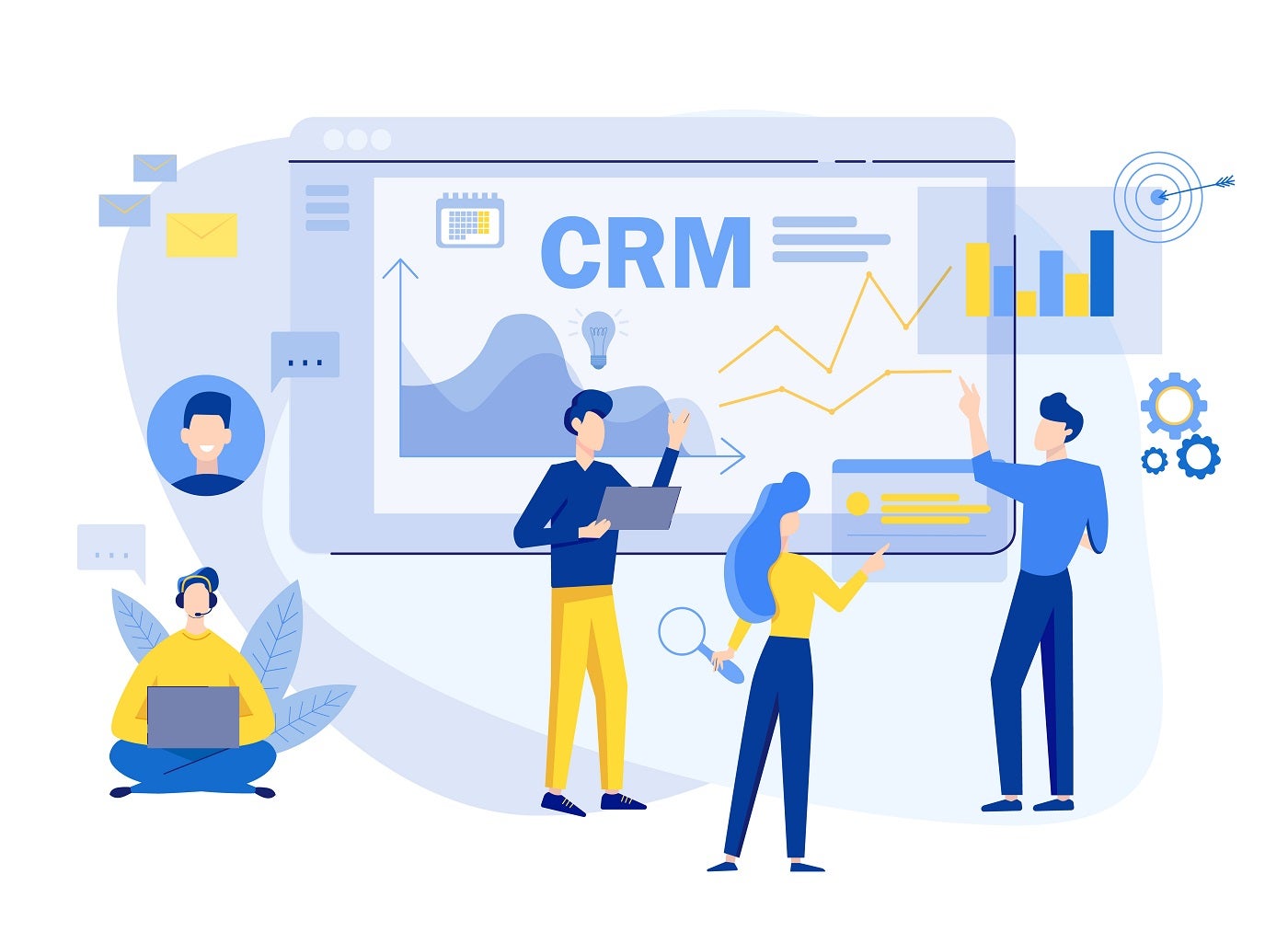| Benefits of CRM | Drawbacks of CRM |
|---|---|
|
|
Customer relationship management software is a sales and marketing tool that organizes imported data, manages lead pipelines and optimizes business workflows. Build custom dashboards that reflect your sales process and track every client interaction — from lead generation to deal closing — from one hub. And with integration capabilities with other tools in a sales tech stack like calendars or email providers, they can automate mundane sales tasks while keeping customer experience front of mind.
Types of CRM
Most CRM software scales to match a business’s size, needs and industry. There are both general and industry-specific CRMs, all of which typically fall under four specific types of customer relationship management: analytical, operational, collaborative and marketing.
Analytical CRM
Analytical CRMs take both internal and external data and turn it into actionable insights using advanced forecasting (Figure A) and AI features. Sales teams who want to better forecast future deals would benefit from this kind of CRM.

Operational CRM
Operational CRMs support more administrative responsibilities, customer-facing tasks and other back-office or day-to-day duties. This is best for businesses looking for a tool to monitor customer life cycles or who need more sales automation functionality. Create custom workflows (Figure B) with rules that trigger activities such as updating records, sending emails, and assigning duties.

Collaborative CRM
Collaborative CRMs can facilitate company-wide collaboration between sales, marketing and service departments by collecting and sharing customer data, such as touch points (Figure C), all from one hub. These CRMs offer more advanced team management features, making them great for customer support and sales teams generating and sharing leads.

Marketing CRM
Marketing-focused CRMs assist with generating and nurturing online leads through social media, email and more. On top of basic email marketing, these CRMs can create drip campaigns (Figure D), run social media campaigns or help with landing pages and website creation.

How does CRM work?
CRM software manages client contact data, supports entire sales pipelines and coordinates marketing campaigns for both B2B and B2C businesses. The CRM software collects data that matches an ideal customer profile and then generates detailed reports and profiles of leads. These profiles and pipelines build out custom dashboards that continuously track individual or entire company sales progress.
SEE: How to Create Effective CRM Strategy
CRMs prioritize automating as much of the sales process as possible. This can include data entry tasks, sales forecasting and even directly engaging with clients on a business’s behalf. They’re meant to house all client interactions in one place and consolidate communication such as form fills, emails, calls and meetings. They can also store important documents, notes and purchase history, allowing entire teams, departments and business access to the same up-to-date data.
When a business’s goal is to generate and nurture leads and close deals quickly with great service, CRMs are meant to take the burden of repetitive tasks from sales reps, such as miscellaneous calendar scheduling tasks or meeting follow ups. A CRM will scale its services to meet a business where it is currently, while also spotting opportunities for growth and adjustments to get the business where it wants to be.
CRM benefits vs. CRM drawbacks
Even small businesses who start out using simple sales tools, spreadsheets and calendars will eventually need to adopt a CRM to help monitor the growth of their business and clientele. Generally, CRMs are worth an investment when it comes to automating and streamlining a sales process.
Benefits of CRM
For any industry and any size business, having one main tracking and pipeline management software that can integrate with your existing tech stack can be game changing. Some standout benefits of implementing a CRM are:
- Create effective processes and workflows: Automate a variety of tasks through third-party integrations, like sending tedious emails, calendar reminders and even customer service touchpoints.
- Monitor team and individual progress: Track team or individual milestones through a CRM dashboard as well as monitor engagement patterns with leads.
- Solidify data organization or segmentation: Import and organize large and complete sets of data, making it more accessible and understandable for all employees.
Drawbacks of CRM
Choosing and implementing a new CRM into an already existing sales process and organization can be a challenge. Learning the software and then fine-tuning it to match specific needs can take time. Some more significant drawbacks to using a CRM can include:
- Can be expensive: Allocate a healthy budget since CRM software can be a big investment, especially for smaller businesses.
- Expect a software learning curve: Dedicate time to deploying new software to a team since CRMs can integrate with different applications and sync across software.
- Occasional technical difficulties: Expect technical difficulties such as customer profile duplicates or delayed information syncing.
Popular CRM providers
The most popular CRM providers cover a range of ideal use cases, industries and even servicing domestic and international clients. Some of the top providers include:
- Freshsales: Prioritize aligning sales and marketing teams to create a better experience for customers through data syncing and lead generation management.
- Zoho CRM: Implement robust automations with detailed analytics that can be personalized to match clients needs.
- Pipedrive: Create custom pipeline stages with actionable sales tasks and monitor performance with heightened privacy and security around data.
- HubSpot CRM: Utilize a live chat software, AI email writing tools, company insights and dashboard building functionality.
- Insightly CRM: Forecast future deals with their advanced sales lead tracking and opportunity management.
- Salesforce: An adaptable and scalable CRM tool with collaborative features and client revenue forecasting.
Factors that influence CRM pricing
CRM pricing is typically based on tiers of support and features. The main factors that influence pricing include how many users you want to have access to the software and what specific features or integrations you require. Some of the more advanced features you want might only be accessible through purchasing a higher support tier. Still, another benefit of CRMs is that it’s an industry standard that they all offer lengthy free trials or demos for clients to test drive the software themselves before committing to a larger purchase.
Should your organization use a CRM?
When deciding if your business should implement a CRM, first consider your company’s current pain points and general goals. If you’re wanting to have better communication and cross-department strategy, look into a collaborative CRM. If you’re wanting to focus on lead generation and sales pipeline growth, a marketing CRM would fit your needs well.
If you think your business could benefit from a combination of CRM types, opt for a more general CRM with a variety of core features. Same goes for industry-specific CRMs that cater directly to your business needs. For example, if you want real estate and property management CRM or a recruitment and staffing CRM — there is software with unique features that support those business types.


